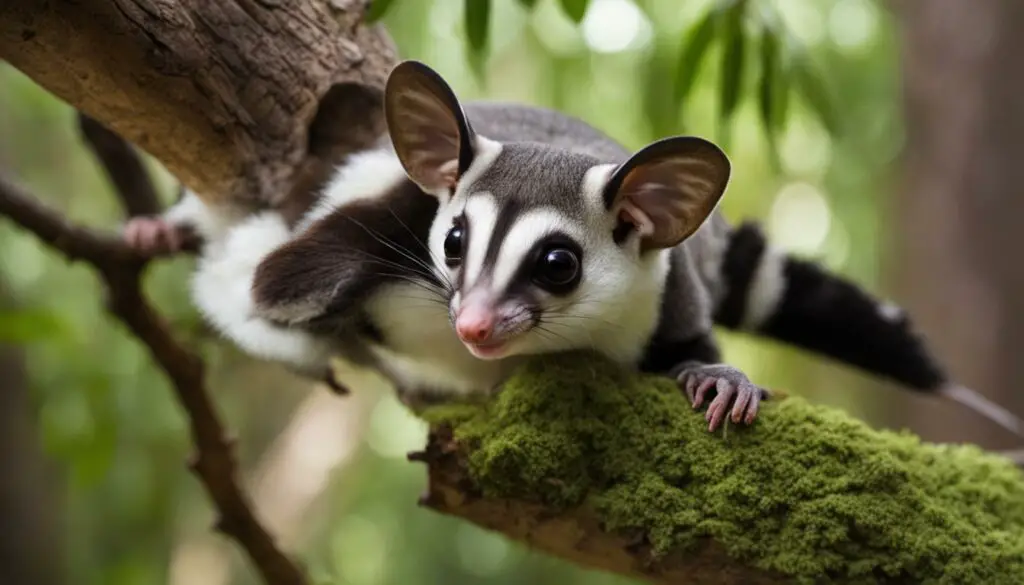If you’re looking to catch a sugar glider safely and calmly, there are a few easy steps you can follow. In this guide, I’ll share techniques and strategies for capturing a sugar glider, as well as tips and tricks to ensure a successful catch.
Key Takeaways:
- Learn techniques and strategies for safely capturing a sugar glider.
- Follow tips and tricks to ensure a successful catch.
- Understand the importance of patience and adaptability when capturing sugar gliders.
- Remember that each sugar glider is unique, so adjust your approach accordingly.
- Prioritize the well-being and safety of the sugar glider throughout the capturing process.
Understanding Sugar Gliders: An Introduction to These Unique Creatures
If you’re not familiar with sugar gliders, let me introduce you to these fascinating creatures. Sugar gliders are marsupials native to places like Australia and Indonesia. They are often mistaken for rodents, but they actually belong to a different animal family. These nocturnal animals are known for their ability to glide through the air, thanks to a unique membrane that stretches between their front and hind limbs. This gliding membrane allows them to jump and glide from one tree to another, much like a flying squirrel.
Sugar gliders are highly social animals and form close bonds with both their fellow gliders and their human owners. They are playful and curious creatures, always exploring their surroundings and engaging in various behaviors such as grooming, climbing, and vocalizing. Understanding their behavior and natural instincts is key to successfully interacting with them and creating a strong bond.
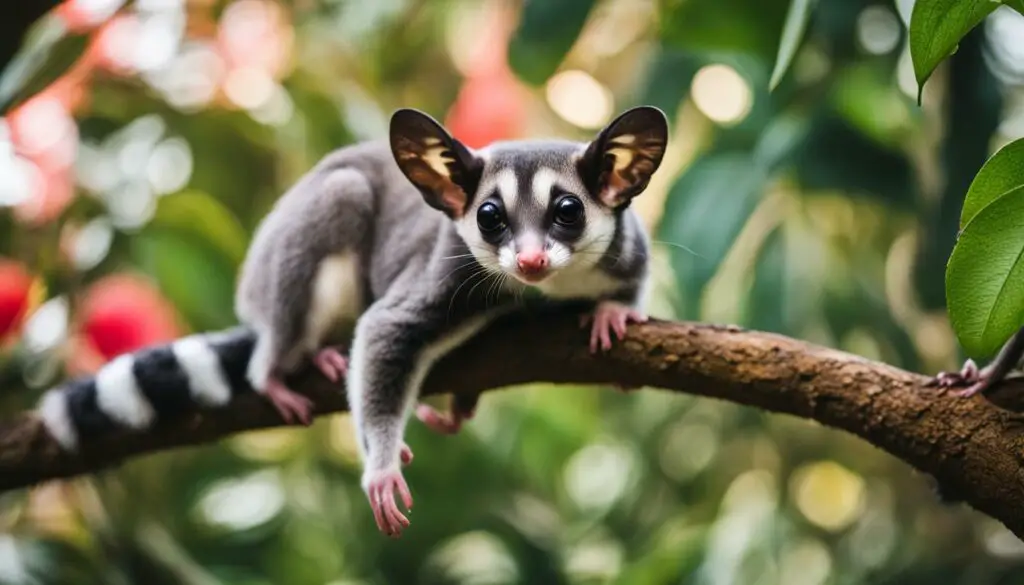
The Best Time and Technique to Pick Up a Sugar Glider
When it comes to picking up a sugar glider, timing and technique are key to ensuring a safe and stress-free interaction. The best time to pick up a sugar glider is in the evening or at night, as they are naturally awake and ready to start their day. This is when they are most active and receptive to interaction. By choosing the right time, you can minimize any potential resistance or fear from the glider.
Now, let’s talk about the technique. Instead of trying to grab the glider, it’s best to use a gentle cupping motion with your hand. Allow the glider to jump onto your hand voluntarily, rather than forcing it. This approach reduces the risk of injury or causing distress to the glider. Remember, they have sharp claws and may scratch or bite if they feel threatened.
If the glider runs away or refuses to jump onto your hand, you can try the pouch method. Wait until the glider goes into its pouch, which is a natural behavior for them. Gently turn the pouch inside out, encouraging the glider to come out onto your hand. This method can be particularly effective if the glider is hesitant or skittish.
Building a bond with your sugar glider is essential for a positive and fulfilling relationship. Consistent handling and interaction will help foster trust and minimize the glider’s desire to escape. However, it’s important to be patient and understanding. Each glider has its own personality and may take some time to adjust to human contact. With time and effort, you can forge a strong bond with your sugar glider and enjoy the companionship they offer.
| Technique | Advantages | Disadvantages |
|---|---|---|
| Cupping Method | Gentle and less intrusive | May take time for glider to trust and jump onto your hand |
| Pouch Method | Encourages glider to come out on its own | Requires patience and may not work for all gliders |
Creating a Safe Environment for Playtime
When it comes to playtime with your sugar glider, it’s crucial to create a safe environment to ensure their well-being and keep them out of harm’s way. Here are some important considerations:
- Sugar glider-proofing a room: Before allowing your glider to roam freely, make sure the room is safe and suitable for their playtime. Secure all doors and windows to prevent escape, and remove any potential hazards such as toxic plants, electrical cords, or small objects they could swallow.
- Supervising playtime: It’s essential to supervise your glider during playtime to ensure their safety. Keep a close eye on them to prevent access to areas like drawers, closets, or floor vents where they could get stuck or injured.
- Glider-safe environment: Provide a glider-safe play area by covering sharp edges or corners with padding and removing any items that could pose a risk, such as heavy objects that could fall or fragile items that could break.
Remember, sugar gliders are small and agile creatures that love to climb and explore, so it’s important to take the necessary precautions to create a safe and secure environment for their playtime.
By following these guidelines and creating a glider-safe environment, you can ensure that playtime is both enjoyable and safe for your sugar glider.
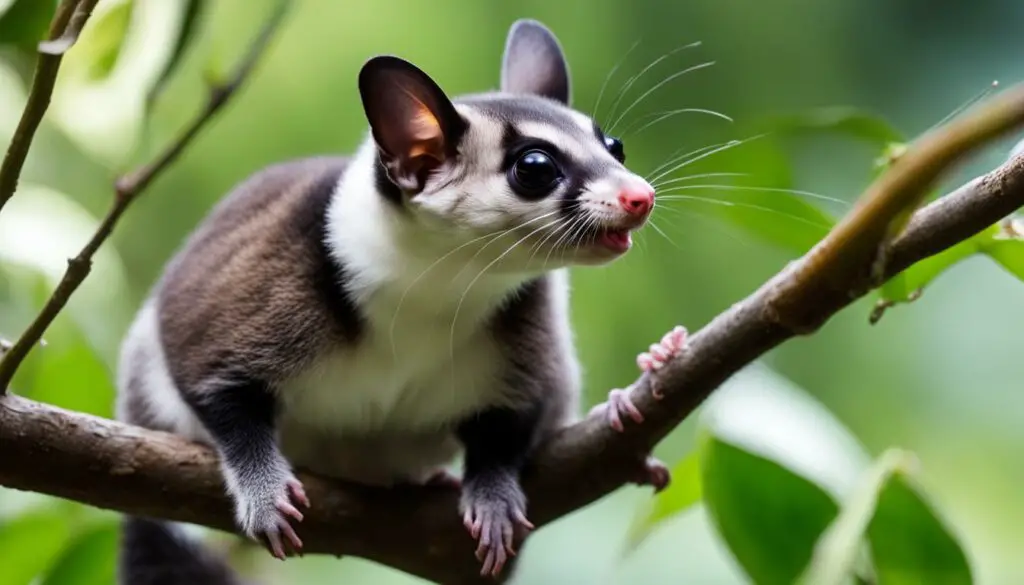
Training Your Sugar Glider to Stay with You
If you want your sugar glider to mainly stay with you during playtime, consistent training is essential. By following these techniques, you can bond with your glider and establish a strong connection:
- Start by allowing your glider to explore a small, secure area with limited distractions.
- Encourage your glider to climb onto your hand by using treats as positive reinforcement.
- When your glider jumps off your body, gently pick it up and place it back on your body until it understands that staying with you is expected.
- Repeat this process consistently and reward your glider with treats each time it stays on your body.
Remember to be patient and understanding throughout the training process. Each glider is unique and may require different amounts of time to learn. It’s important to celebrate small victories and avoid rushing the training process.
“Bonding with a sugar glider requires time and effort, but the rewards are worth it. Treat your glider with kindness, use positive reinforcement, and offer plenty of love and attention. With consistent training and a nurturing environment, your sugar glider will learn to trust you and enjoy spending time with you.”
Bonding with a Sugar Glider
Bonding with a sugar glider is more than just training it to stay with you. It’s about developing a strong emotional connection and creating a secure glider-human relationship. Here are some additional tips to help foster a deep bond with your sugar glider:
- Provide plenty of social interaction and playtime outside of the cage to build trust and strengthen your bond.
- Speak softly and offer gentle touches to make your glider feel safe and loved.
- Offer a variety of toys and enrichment activities to keep your glider engaged and mentally stimulated.
- Establish a consistent routine to help your glider feel secure and comfortable.
Remember to always approach bonding with patience and understanding. It may take time for your sugar glider to fully trust you, but with a nurturing and loving approach, you can create a rewarding and lifelong bond.
| Training Techniques | Benefits |
|---|---|
| Using treats as positive reinforcement | Encourages desired behavior and creates a positive association |
| Consistent training and repetition | Helps reinforce expectations and establishes a routine |
| Offering a secure and nurturing environment | Makes the glider feel safe and comfortable |
| Providing social interaction and playtime | Strengthens the bond and builds trust |
Allowing Your Sugar Glider to Explore
Supervised playtime is an essential part of keeping your sugar glider happy and engaged. Creating a glider-safe room where they can freely explore is the key to providing them with the enrichment they need. Ensure that the room is free from any potential hazards such as open windows or exposed wires.
One way to provide enrichment for your sugar glider during playtime is by offering toys that encourage their natural behaviors. This could include branches for climbing, tunnels for exploring, and toys that can be chewed on. These activities will not only keep them physically active but also mentally stimulated.
“Allowing your sugar glider to explore their surroundings is an important part of their overall well-being.”
While your sugar glider is exploring, make sure to closely supervise their playtime to ensure their safety. This way, you can quickly intervene if they are in any danger or attempting to access areas that may not be glider-safe. By actively engaging with your sugar glider during playtime, you can establish a stronger bond and better understand their individual needs.
| Benefits of supervised playtime: | Tips for a glider-safe room: |
|---|---|
|
|
Remember, allowing your sugar glider to explore is an important part of their overall well-being. By providing a glider-safe room, offering enrichment, and closely supervising their playtime, you can ensure that your sugar glider remains happy, healthy, and fulfilled.
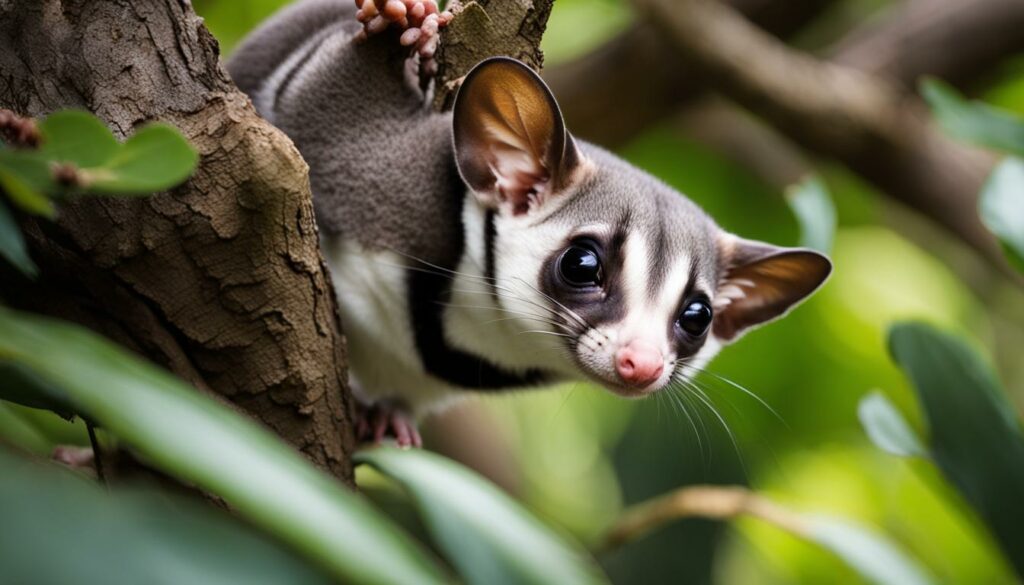
Feeding Your Sugar Glider a Nutritious Diet
Providing a balanced and nutritious diet is crucial for the health and well-being of your sugar glider. Their diet should consist of 75% fruits and vegetables and 25% protein sources. Offering a variety of fruits and vegetables ensures they receive essential vitamins and minerals. Some suitable options include apples, bananas, carrots, grapes, and sweet potatoes. However, it’s important to avoid feeding them toxic foods like avocado, chocolate, or caffeine.
When selecting protein sources, opt for small pieces of cooked lean meats, such as chicken or turkey, hard-boiled eggs, or unsweetened yogurt. These protein-rich foods help meet their dietary needs and support muscle development. Additionally, sugar gliders enjoy live insects like mealworms or crickets as treats, which provide them with mental stimulation and mimic their natural feeding behaviors.
Supplementing their diet with calcium and multivitamins is also recommended to ensure they receive all the necessary nutrients. Calcium helps prevent calcium deficiency and related health issues, such as bone disorders. It’s important to provide a balanced and varied diet to keep your sugar glider healthy and thriving.
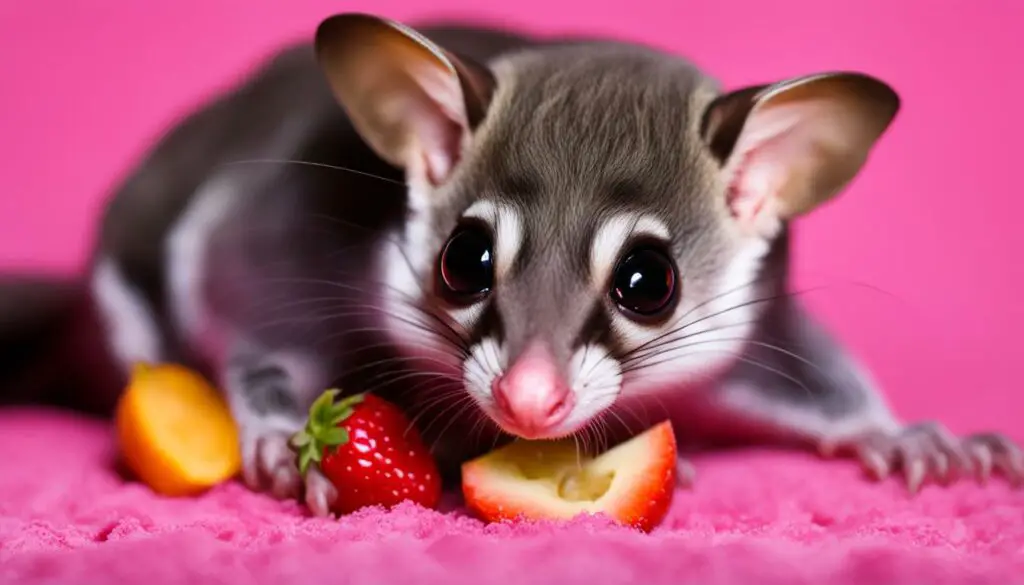
Table: Recommended Foods for Sugar Gliders
| Food Group | Examples |
|---|---|
| Fruits | Apples, bananas, grapes, papaya, strawberries |
| Vegetables | Carrots, sweet potatoes, broccoli, green beans, bell peppers |
| Protein Sources | Chicken, turkey, hard-boiled eggs, unsweetened yogurt |
| Treats | Mealworms, crickets, unsalted nuts |
Note: Always consult with a veterinarian who specializes in exotic pets to ensure you are providing the appropriate diet for your sugar glider. Their dietary needs may vary based on age, health condition, and individual preferences.
Creating the Perfect Habitat for Your Sugar Glider
When it comes to creating the perfect habitat for your sugar glider, there are a few key factors to consider. The cage size should be as large as possible, with a minimum recommendation of 20″ x 20″ x 30″. This will provide plenty of space for your glider to move around and engage in natural behaviors. The cage should have wire mesh or metal bars close enough together to prevent escape, ensuring the safety of your glider.
It’s important to provide a nesting area for your sugar glider, such as a cloth pouch or wooden birdhouse. This will give them a cozy and secure place to sleep and rest. The bedding used in the cage should be non-toxic and absorbent, such as commercial bedding, wood shavings, or shredded paper. Regularly clean and replace the bedding to maintain a clean and hygienic environment for your glider.
To keep your sugar glider entertained and mentally stimulated, provide a variety of toys and branches for climbing. These toys should be non-toxic and safe for your glider to interact with. Regularly rotate and replace the toys to keep them engaged and prevent boredom. Remember, a happy and enriched sugar glider is a healthy glider!
| Aspect | Recommendation |
|---|---|
| Cage size | Minimum 20″ x 20″ x 30″ |
| Wire mesh | Closely spaced to prevent escape |
| Nesting area | Cloth pouch or wooden birdhouse |
| Bedding | Non-toxic and absorbent |
| Toys | Non-toxic and regularly rotated |
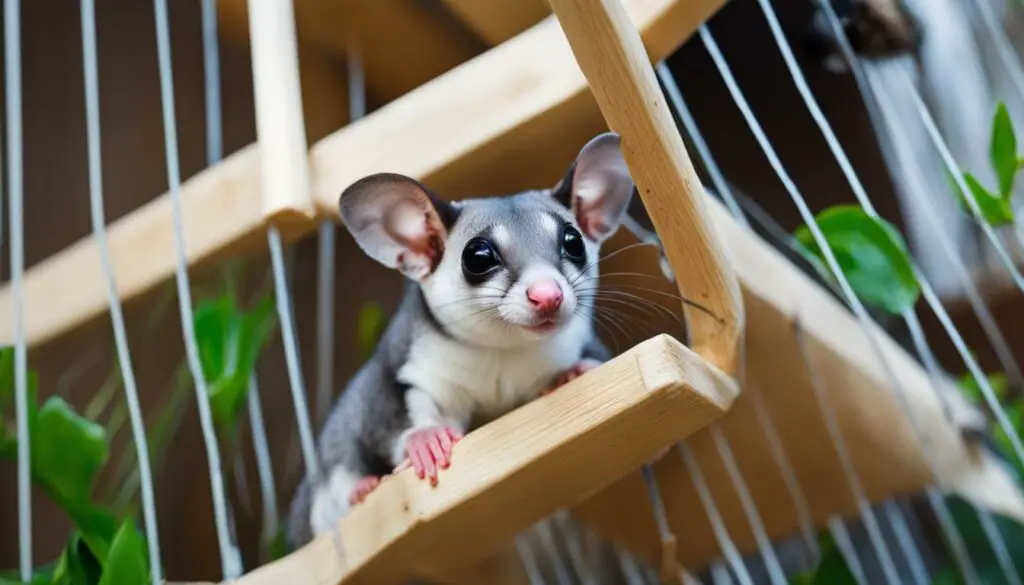
Common Health Issues to Watch Out for in Sugar Gliders
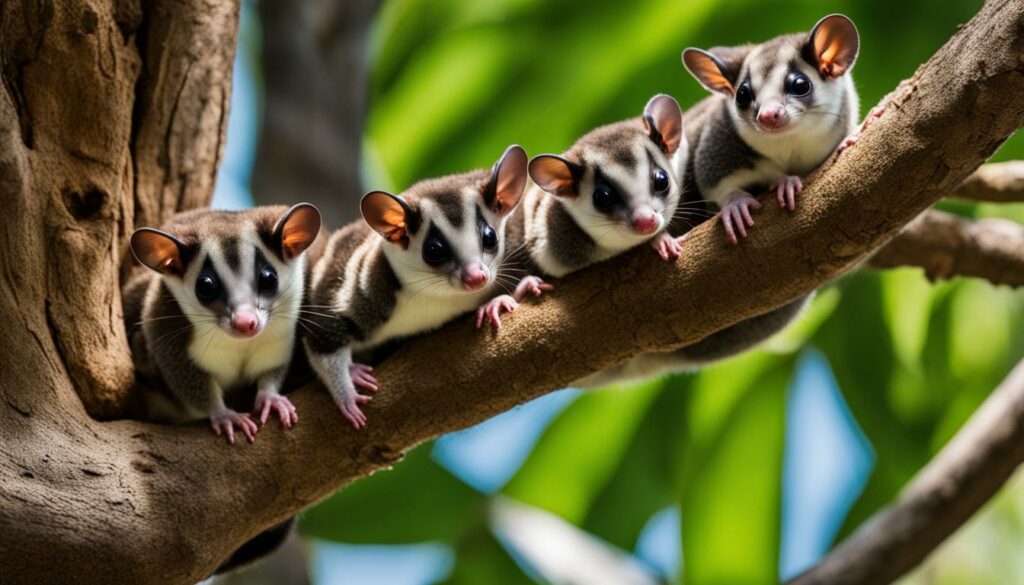
Sugar gliders are generally healthy animals, but it’s important to be aware of some common health issues that can arise. By recognizing and addressing these issues promptly, you can ensure the well-being and longevity of your sugar glider.
1. Calcium Deficiency
Calcium deficiency is a common problem in sugar gliders, which can lead to serious health issues such as lameness and paralysis. To prevent calcium deficiency, it’s crucial to provide a well-balanced diet that includes calcium-rich foods like leafy greens, broccoli, and powdered calcium supplements specifically formulated for sugar gliders.
2. Constipation and Diarrhea
Sugar gliders can experience digestive issues like constipation and diarrhea, often caused by diet imbalances or stress. Ensure your glider has a varied diet consisting of fruits, vegetables, and protein sources, and avoid feeding them foods that are high in sugar or fat. If you notice any changes in your glider’s stool consistency or frequency, consult a veterinarian for proper diagnosis and treatment.
3. Injuries
Accidents and injuries can occur during playtime or handling sessions. Sugar gliders are small and delicate, so it’s important to handle them gently and carefully to avoid causing any harm. Regularly check their claws and nails to ensure they are not overgrown, as this can lead to injuries or painful tears. If you suspect your glider has suffered an injury, seek veterinary care immediately.
4. Parasites
External parasites like ticks and mites can infest sugar gliders, causing discomfort and potentially transmitting diseases. Regularly inspect your glider’s fur and skin for any signs of parasites, such as itching, scratching, or small bite marks. If you notice any parasites, consult a veterinarian for appropriate treatment options.
5. Stress
Sugar gliders are sensitive animals that can easily become stressed in certain environments or situations. Stress can weaken their immune system and make them more susceptible to various health issues. It’s important to provide a calm and enriching environment for your glider, with plenty of hiding spots, toys, and social interaction. Avoid exposing them to loud noises, sudden temperature changes, or other stress-inducing factors.
By being aware of these common health issues and taking proactive measures to prevent and address them, you can ensure that your sugar glider remains happy and healthy throughout its life.
Ensuring Proper Temperature and Lighting for Your Sugar Glider
When it comes to creating a suitable habitat for your sugar glider, maintaining the right temperature and providing adequate lighting are crucial factors to consider. Sugar gliders are sensitive to temperature changes and require a controlled environment to thrive. Additionally, light exposure plays a significant role in their daily activities and overall well-being.
To ensure your sugar glider’s comfort, the ideal room temperature should be between 15-30 degrees Celsius. Keep in mind that anything below 15 degrees Celsius can be too cold for them, while temperatures above 30 degrees Celsius can be excessively warm. If the room temperature is on the cooler side, you can use a heat lamp or a heat rock to provide additional warmth. However, be cautious not to overheat their enclosure, as this can be harmful to their health.
Light exposure is another essential aspect of sugar glider care. These nocturnal creatures require a clear distinction between night and day. During the daytime, make sure they have access to enough light, but avoid direct sunlight. You can achieve this by placing their enclosure in a well-lit area of your home or using artificial lighting that mimics natural daylight. In contrast, the room should be dimly lit or dark during their active hours at night. This helps regulate their sleep patterns and supports their natural instincts.
By maintaining the proper temperature and providing suitable lighting, you can create a comfortable and stimulating habitat for your sugar glider. Remember to monitor the temperature regularly and adjust it accordingly to ensure their well-being. Additionally, pay attention to their light exposure to promote a healthy and balanced lifestyle.
Veterinary Care for Sugar Gliders
Ensuring the health and well-being of your sugar glider is essential, and regular veterinary care is an important part of that. Just like any other pet, sugar gliders should receive regular check-ups to catch any potential health issues early on and provide preventive measures.
During a routine check-up, a qualified exotic pet veterinarian will assess your sugar glider’s overall health, monitor their weight, and check for any signs of illness or injury. They may also administer necessary vaccinations and provide guidance on proper nutrition and care.
Preventive measures for sugar gliders include regular dental care, as dental issues can be common in these small animals. A veterinarian may also recommend preventive treatments for parasites, such as ticks or mites, which can affect sugar gliders.
| Veterinary Care for Sugar Gliders | |
|---|---|
| Regular check-ups | Preventive measures |
| Dental care | Treatment for parasites |
Remember, veterinary care plays a crucial role in ensuring the long and healthy life of your sugar glider. By staying proactive with regular check-ups and following preventive measures recommended by your veterinarian, you can provide the best possible care for your beloved pet.
The Joy of Bonding with Your Sugar Glider
Bonding with a sugar glider is a truly special experience that deepens the glider-human relationship. Developing a strong bond is essential for creating a loving and trusting connection with your furry friend. When you invest time and effort into bonding with your sugar glider, you’ll be rewarded with a loyal and affectionate companion.
One of the best ways to bond with your sugar glider is through daily handling and interaction. Gently and confidently hold your glider close to your body to help them feel safe and secure. Let them explore your hands and arms, and allow them to crawl onto you at their own pace. Remember to move slowly and avoid sudden movements, as gliders can be sensitive to quick changes.
“The more time you spend with your sugar glider, the stronger your bond will become. Patience and consistency are key!”
In addition to handling, providing your sugar glider with plenty of love and attention is crucial for building a strong bond. Talk to them softly, offer treats as rewards, and spend quality playtime together. You can create a special bond by engaging in interactive activities, such as teaching them tricks, playing games, or simply snuggling up for a cozy cuddle session.
Remember, every sugar glider is unique, so it’s important to be patient and understanding. Building a bond takes time, but with dedication and love, you’ll create a special connection that will last a lifetime.
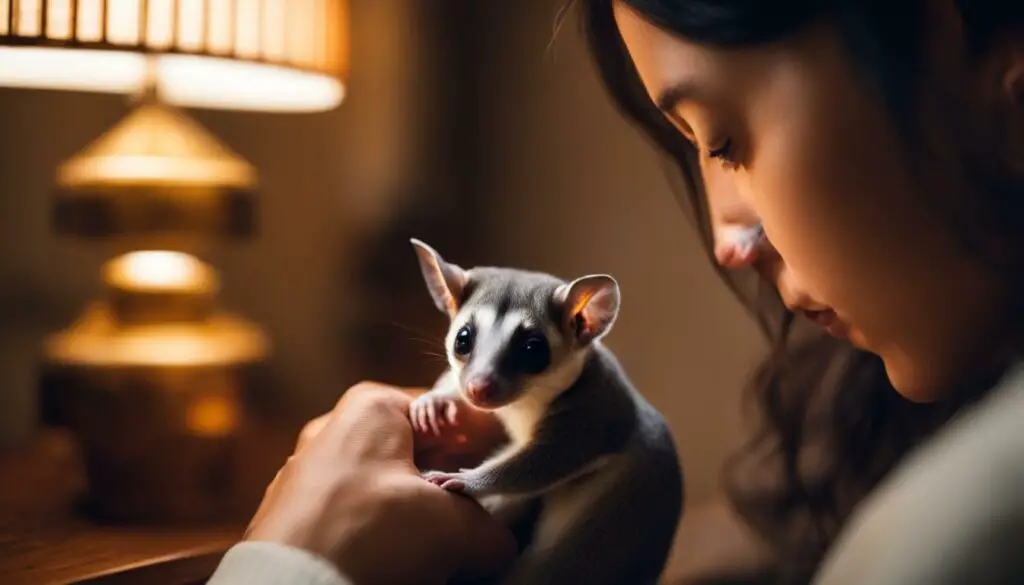
Tips for Successful Sugar Glider Capture
Capturing a sugar glider can sometimes be a challenging task, especially if they are elusive or nervous. However, with the right techniques and strategies, you can increase your chances of a successful catch. Here are some tips to help you capture sugar gliders effectively:
- Approach calmly: Sugar gliders are sensitive to sudden movements and loud noises, so it’s important to approach them calmly and gently. Move slowly and avoid any sudden gestures that might startle them.
- Use a cupping motion: Instead of trying to grab at the sugar glider, use a cupping motion with your hand. Hold your hand out and let the glider jump onto it willingly. This method is less intimidating for the glider and reduces the risk of injury for both of you.
- Try a pouch: Another effective method is to use a pouch to safely catch the glider. Wait until the glider goes into its pouch and gently turn the pouch inside out, encouraging the glider to come out and onto your hand.
- Provide treats: Sugar gliders can be enticed with treats, so offering some tasty treats can help lure them towards you. Use their favorite treats as positive reinforcement to encourage them to come closer and trust you.
Remember that each sugar glider is unique, and they may require different approaches. Patience and adaptability are key when it comes to successfully capturing sugar gliders. By following these tips and taking the time to build trust with your glider, you can create a safe and secure environment for them to thrive.
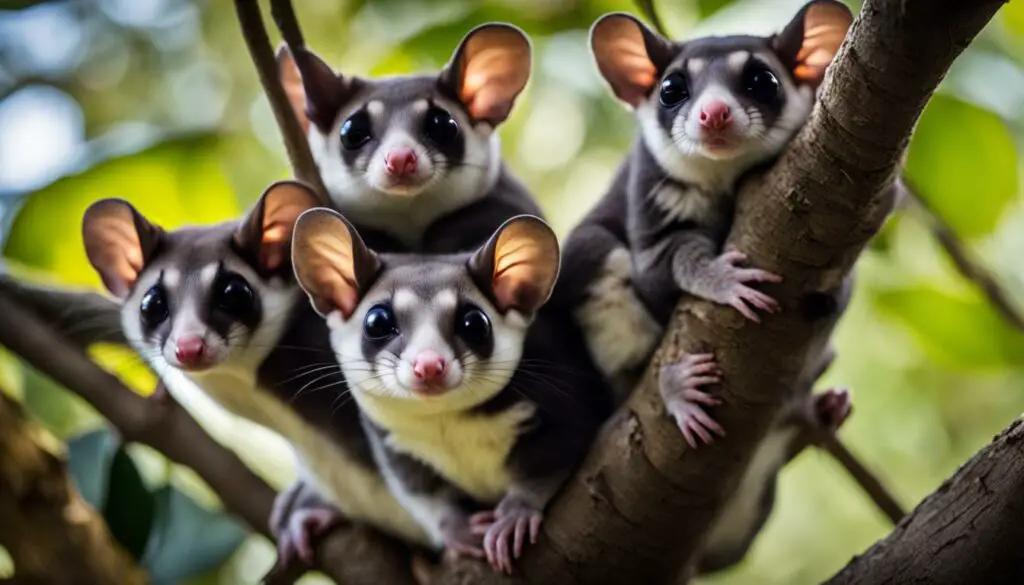
Conclusion
Capturing sugar gliders can be a rewarding experience, but it requires patience, gentle handling, and the use of effective techniques. By approaching gliders calmly, using a cupping motion or a pouch, and providing treats as positive reinforcement, you can increase your chances of successfully capturing these unique creatures. Remember to always prioritize their well-being and create a safe environment for them to explore and play. With time and effort, you can develop a strong bond with your sugar gliders and enjoy the joy they bring to your life.
Conclusion
Wrapping up this guide on how to catch a sugar glider safely and successfully, it’s clear that understanding their behavior and needs is crucial. By following the techniques and tips shared in this article, you can create a loving and enriching relationship with your sugar glider.
Remember, patience and persistence are key when it comes to bonding with your glider. Consistent handling, creating a safe environment for playtime, and providing a nutritious diet are essential for their well-being and happiness.
In conclusion, capturing and caring for sugar gliders can be a delightful and rewarding experience. By prioritizing their welfare, seeking regular veterinary care, and building a strong bond, you can enjoy the joy and companionship that these unique creatures bring into your life. So go ahead, embark on this journey of catching and nurturing these delightful marsupials, and cherish the special moments you’ll share together!
FAQ
When is the best time to pick up a sugar glider?
The best time to pick up a sugar glider is in the evening or at night when they are naturally awake and ready to start their day.
How do I safely pick up a sugar glider?
To safely pick up a sugar glider, use a cupping motion with your hand and let the glider jump onto your hand. It’s easier to let the glider cling onto you rather than trying to grab at it.
How can I create a safe environment for sugar glider playtime?
Sugar gliders love to climb, so make sure the room is sugar glider-proofed, with doors and windows securely closed and hazards removed. Supervise their playtime to ensure they stay safe and can’t access areas like drawers, closets, or floor vents.
How can I train my sugar glider to stay with me during playtime?
When your glider jumps off your body, pick it up and place it back on your body until it learns to stay. With patience and persistence, you can also train your glider to come back to you when called by using treats as positive reinforcement.
What should I feed my sugar glider?
A sugar glider’s diet should consist of 75% fruits and vegetables and 25% protein. Suitable fruits and vegetables include apples, bananas, carrots, grapes, and sweet potatoes. Protein sources can include small pieces of cooked lean meats, hard-boiled eggs, and yogurt. Treats can include live insects and raw, unsalted nuts.
How big should a sugar glider’s cage be?
A sugar glider’s cage should be as large as possible, with a minimum size recommendation of 20″ x 20″ x 30″. The cage should have wire mesh or metal bars close enough together to prevent escape. Providing a nesting area, such as a cloth pouch or wooden birdhouse, is essential for their comfort and security.
What are some common health issues in sugar gliders?
Common health issues in sugar gliders include calcium deficiency, constipation and diarrhea, injuries, parasites, and stress. It’s important to address these issues promptly and consult with a qualified veterinarian for proper treatment.
How should I ensure the proper temperature and lighting for my sugar glider?
Sugar gliders require a temperature-controlled environment. The ideal room temperature should be between 15-30 degrees Celsius. Heat lamps and heat rocks can provide additional warmth if needed. It’s also important to provide enough light during the daytime and avoid direct sunlight.
Do sugar gliders need regular veterinary care?
Yes, regular check-ups with a qualified exotic pet veterinarian are essential for your sugar glider’s well-being. Vaccinations, health assessments, and preventive treatments for parasites are important aspects of their care.
How can I bond with my sugar glider?
Bonding with a sugar glider requires patience, understanding, and creating a consistent routine. Handling your glider with care and providing a safe and enriching environment will help build trust and a strong bond between you and your sugar glider.
What are some tips for successfully capturing a sugar glider?
Approach the glider calmly and gently, avoid sudden movements, use a cupping motion or a pouch to safely catch them, and provide treats as positive reinforcement. Each sugar glider is unique, so patience and adaptability are key to successfully capturing them.

